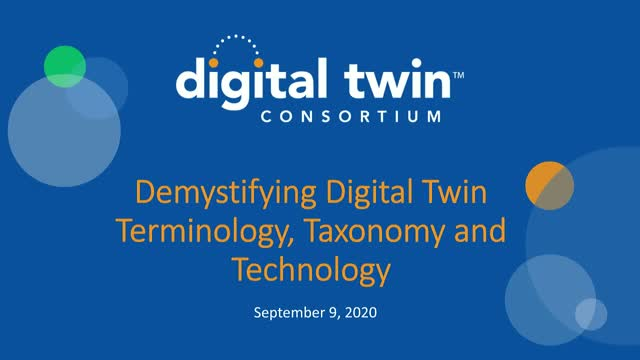This webinar will look at the latest developments that are turning the digital twin into a must have for many industries, and the factors driving this accelerated adoption and deployment.
Included will be a discussion of the lifecycle of digital twins and a blueprint for a reference architecture framework.
Platform stacks supporting open source and open standards based on real world applications and use cases will be presented.
The term digital twin is being used with increasing frequency, but with little consistency, across multiple industries today. Technologies enabling digital twins have evolved considerably, while a simple taxonomy/ontology/vocabulary for the concept itself has not. The Digital Twin Consortium Technology, Terminology & Taxonomy Working Group fills this void by recommending a preferred definition, taxonomy, and, ultimately, hierarchy of digital twins to enable the industry to speak with a common vocabulary on this concept – enabling better understanding through shared definition and vernacular.
Digital Twin Consortium is working to define common characteristics, evaluate models and methodologies, and recommend a taxonomy/ontology/potential hierarchy of digital twins to help industries better understand the continuum of digital twins from simple to complex.
Learn more about how Digital Twin Consortium, the Authority on Digital Twin, is driving efforts to advance Digital Twin technology across markets, improving interoperability and influencing future standards and requirements, and how you and your company can get involved: https://www.digitaltwinconsortium.org/membership/
 Presented by
Presented by